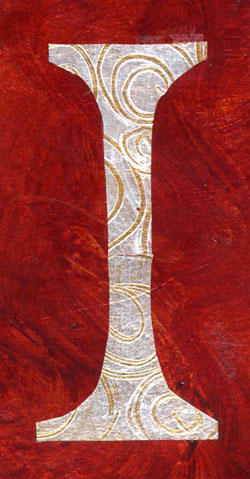 n the Middle Ages, artists depicted the raising of Lazarus with styles that varied but drew upon standard elements. The artists presented the viewer with the entire scene: a commanding Jesus summons forth Lazarus, who appears in some state of enshroudment. A crowd gathers around; typically, at least one of the bystanders holds his or her nose, underscoring practical Martha’s observation: “Lord, already there is a stench because he has been dead four days” (John 11.39). The Limbourg Brothers offer such a depiction in Les Très Riches Heures du Duc de Berry (The Very Rich Hours of the Duke of Berry), which was, as its title suggests, one of the most lavish Books of Hours of the medieval period. You can visit The Raising of Lazarus to see their view of the scene (with an abundance of nose-holding folks).
n the Middle Ages, artists depicted the raising of Lazarus with styles that varied but drew upon standard elements. The artists presented the viewer with the entire scene: a commanding Jesus summons forth Lazarus, who appears in some state of enshroudment. A crowd gathers around; typically, at least one of the bystanders holds his or her nose, underscoring practical Martha’s observation: “Lord, already there is a stench because he has been dead four days” (John 11.39). The Limbourg Brothers offer such a depiction in Les Très Riches Heures du Duc de Berry (The Very Rich Hours of the Duke of Berry), which was, as its title suggests, one of the most lavish Books of Hours of the medieval period. You can visit The Raising of Lazarus to see their view of the scene (with an abundance of nose-holding folks).
The Saint John’s Bible, the first Bible to be entirely illuminated and lettered by hand in more than 500 years, presents this scene from a strikingly different perspective. Rather than placing the viewer near the bystanders outside the grave, the illuminator, Donald Jackson, locates the viewer inside the shadowy tomb. We are close enough to smell the death-garbed Lazarus. But we see from a perspective very close to the waking man’s own: our gaze follows his toward the opening of the tomb, where Jesus stands drenched in light.
The shift in perspective beckons us to see that as Jesus calls to Lazarus, he calls also to us. How are you feeling challenged to move this day?
Prayer of Confession
God of compassion,
we acknowledge the times
we have lived too long
with the words that others have put
into our mouths,
with the pain they have written
onto our bodies,
with the terror they have burned
into our hearts,
with the shame they have inscribed
onto our souls.
We know the times we have clung
to sackcloth not of our making,
when we have lived
clothed in weariness,
cloaked with anger,
and enshrouded by sorrow.
We grieve the occasions
when we have lived with alienation
rather than association,
when we have sought isolation
rather than consolation,
when our wounds within
have shut others out.
We confess our fear of the dark
and our uncertainty of the light.
Yet you have placed within us, God,
a longing for survival,
a hunger for your wholeness,
a yearning for your comfort,
and a hope for all our healing.
Bless our mouths
to name our wounds,
that we may not fear them;
our bodies,
that we might cherish them;
our hearts, that we may delight
in their longings,
and our souls, that we may trust
the wisdom of the stories they hold.
Grant us the courage
to be touched by you,
that when our days of weeping
are done,
we may wear your garments of gladness,
see one another in the light
of your love,
and stand together in the power
of your resurrection.
In the name of the risen Christ,
we pray. Amen.
Prayer © Jan L. Richardson, from In Wisdom’s Path: Discovering the Sacred in Every Season.












March 8, 2008 at 2:50 PM |
For days, while you were sorting, I sought new words, checking ‘the prayerbook’ from time to time. While I’ve carried around the narrative and the folks from yesterday’s posting, threading them in and out of the week that was for me, it was this prayer I was waiting for, to be reminded of the value of naming, the wisdom of story and the power of resurrection, amen and amen. It is these syllables that hold such resonance for me [in me…] and it is as this season of Lent unfolds that I can entertain another invitation to cross an additional threshold…….somehow, the answer is always ‘thank you’…..
March 9, 2008 at 7:26 PM |
Ah, for me, I just love the picture with the nose holding. It made me laugh and laugh. I like it when the details come to life.